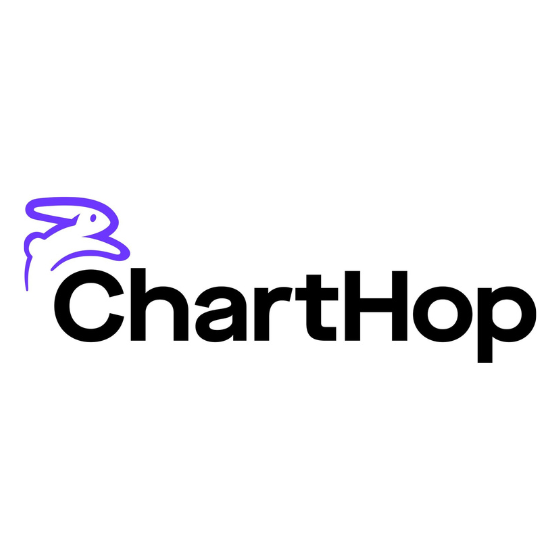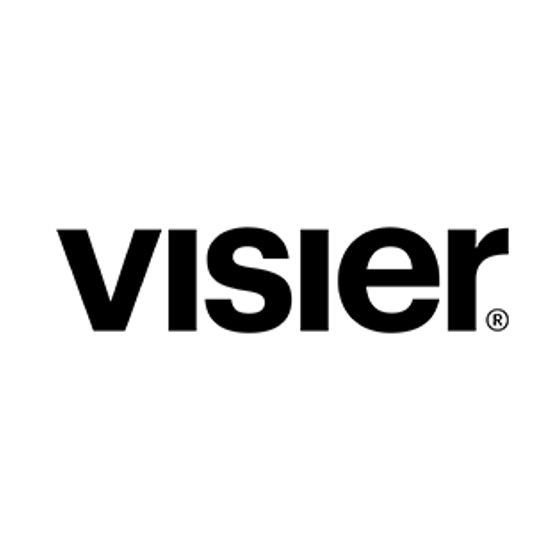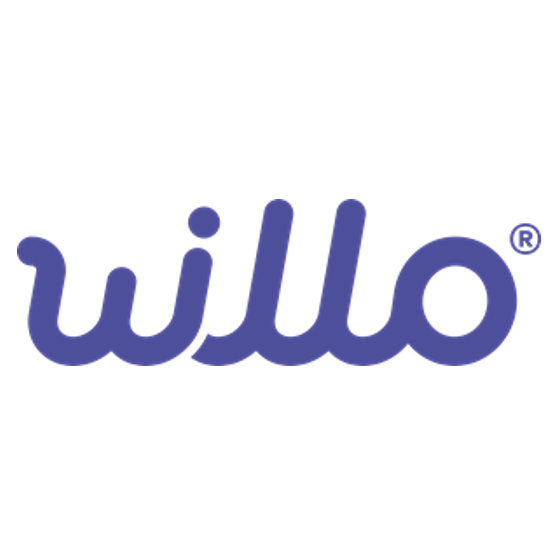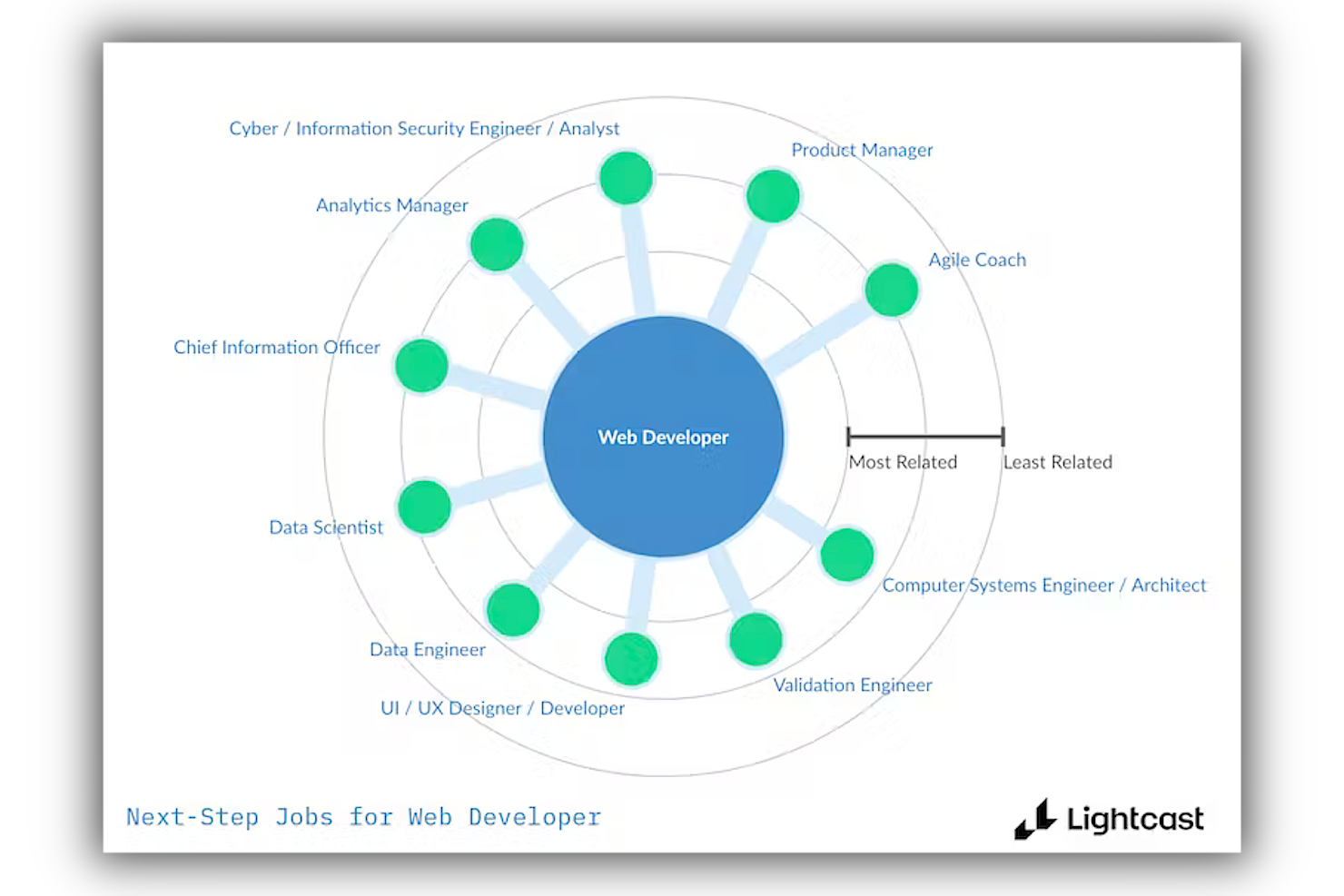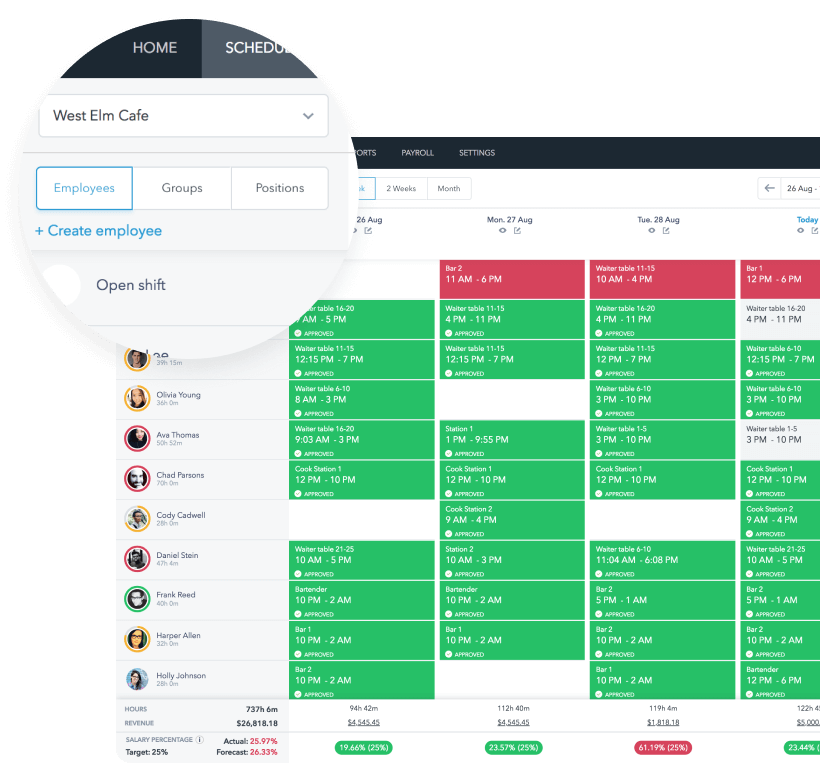10 Best Workforce Planning Software Shortlist
Here's my pick of the 10 best software from the 20 tools reviewed.
Get free help from our HR software advisors to find your match.
With so many different workforce planning software solutions available, figuring out which is right for you is tough. You know you want to aid in forecasting labor requirements, aligning workforce allocation with business goals, and identifying skill gaps, but need to figure out which tool is best. In this post, I'll help make your choice easy, sharing my personal experiences using dozens of different workforce planning tools with teams of all sizes, with my picks of the best workforce planning software overall.
Why Trust Our Software Reviews
We've been testing and reviewing HR software since 2019. As HR professionals ourselves, we know how critical and difficult it is to make the right decision when selecting software.
We invest in deep research to help our audience make better software purchasing decisions. We've tested more than 2,000 tools for different HR use cases and written over 1,000 comprehensive software reviews. Learn how we stay transparent, and take a look at our software review methodology.
Workforce Planning Software: Pricing Comparison Chart
This comparison chart summarizes pricing details for my top workforce planning software selections to help you find the best software for your budget and business needs.
| Tool | Best For | Trial Info | Price | ||
|---|---|---|---|---|---|
| 1 | Best workforce planning software for international organizations | Free trial + demo available | From $29/month | Website | |
| 2 | Best for automated org charts | Free demo available | From $1.05/user/month (billed annually) | Website | |
| 3 | Best workforce planning software with a focus on payroll | Free demo + product tour available | Pricing upon request | Website | |
| 4 | Best for a simplified drag-and-drop workforce planning tool | Free demo + free plan available | From $8/user/month | Website | |
| 5 | Best compensation planning for complex businesses | Free plan available | Pricing upon request | Website | |
| 6 | Best for data driven workforce planning and org design | 30-day free trial | From $199/seat/month | Website | |
| 7 | Best for integrated headcount planning | Free demo available | Pricing upon request | Website | |
| 8 | Best workforce planning software for in-depth actionable data by geography | Free demo available | Pricing upon request | Website | |
| 9 | Best workforce planner for employee scheduling and payroll forecasting | 30-day free trial | Pricing upon request | Website | |
| 10 | Best workforce planning software for using AI to solve urgent challenges | Free demo available | Pricing upon request | Website |
-

Rippling
Visit WebsiteThis is an aggregated rating for this tool including ratings from Crozdesk users and ratings from other sites.4.8 -

Willo
Visit WebsiteThis is an aggregated rating for this tool including ratings from Crozdesk users and ratings from other sites.4.8 -

edays
Visit WebsiteThis is an aggregated rating for this tool including ratings from Crozdesk users and ratings from other sites.4.3
Best Workforce Planning Software Reviews
Here’s a brief description of the 10 best workforce planning software to showcase each tool’s best use case, and some noteworthy features. Keep reading to find additional bonus picks at the bottom of the list.
Deel is an impressive HR platform that helps organizations manage their global workforce from a single source of truth.
Why I picked Deel: Deel’s platform offers a complete view of your entire global workforce, including both employees and contractors. Having this single source of truth gives teams a current and complete picture of their workforce without having to compile data from various sources. This data can help international teams with their workforce planning needs, including forecasting staff needs based on current staffing levels.
Deel Standout Features and Integrations:
Features include advanced payroll capabilities and global coverage for benefits administration, which are valuable tools for executive teams looking to manage their HR needs more effectively. There’s also comprehensive reporting and analytics, allowing you to make informed decisions quickly about your entire workforce. These features help you consolidate administrative costs and ensure your workforce is managed efficiently and effectively.
Employees can use Deel's clean interface to generate reports, view time off requests, and manage other important aspects of workforce planning.
Integrations include Ashby, BambooHR, Expensify, Greenhouse, Hibob, Netsuite, Okta, OneLogin, Quickbooks, SCIM, Xero, Workday, and Workable. Plus, Deel has an API for connecting to tools beyond their pre-built integrations, helping you automate or sync data across your HR tech stack.
Deel offers flat rate pricing details upon request, as well as a free demo. It also offers free HR software for businesses.
OrgChart is an organizational chart and workforce planning solution designed for companies of all sizes. It allows users to easily create, customize, and share their org charts, providing organizational visibility, insights, and the ability to build future workforce plans that support growth and scale.
Why I picked OrgChart: OrgChart provides automated chart creation by integrating employee data from multiple sources including over 50 HR systems. This feature allows you to generate dynamic, and visually sophisticated org charts based on real-time data, automatically updating as changes occur, ensuring that the org chart is always up to date.
OrgChart also offers countless customization features, like colors, fonts, fields displayed in each box, calculations, and even the placement of your logo. It also allows the ability to export and share charts in multiple formats including PDF, PowerPoint, and web link—with just a click.
OrgChart Standout Features and Integrations:
Features include the ability to capture important trends and actionable insights across areas such as performance, talent management, and DE, helping organizations make better-informed, strategic decisions. Furthermore, OrgChart enables you to collaborate with key stakeholders to build data-driven models of future organizational structures, helping to clearly define and communicate the company's vision for growth.
Integrations include Workday, ADP, UKG, Paychex, isolved, Paylocity, Dayforce, BambooHR, Oracle Cloud, Lever, SAP, Salesforce, Paycor, Paycom, Google Directory, and more.
Vena offers tools for financial forecasting, workforce management, and operational planning. Its platform is designed to integrate with existing workflows, enhancing the accuracy and efficiency of data-driven decisions.
Why I picked Vena: It helps businesses forecast staffing needs, manage employee data, and align workforce strategies with financial goals. Its platform integrates data across departments, ensuring workforce planning is accurate, strategic, and aligned with overall business objectives. It also includes integrated collaboration tools to make planning easier for HR and finance teams.
Vena Standout Features and Integrations:
Features include tools for headcount forecasting, compensation management, and scenario modeling. The software enables real-time collaboration across departments, ensuring alignment between workforce needs and financial objectives. Its reporting capabilities give teams visibility into workforce performance, helping organizations optimize their human capital and budget accordingly.
Vena contains several pre-built workflows to allow dynamic modeling of changes to payroll and labor costs and to control user access to sensitive data. The software also includes several Excel templates for labor expense planning to tracking upcoming hires and pre-built logic to help calculate benefits in America, Canada, or the UK.
Integrations include ADP, Workday, Bamboo, Peoplesoft and enterprise resource planning systems (ERPs) such as NetSuite and Sage Intacct.
ChartHop offers dynamic workforce planning, headcount management, and data-driven decision-making tools for HR teams and executives.
Why I picked ChartHop: It moves away from spreadsheet purgatory and takes a more visual approach regarding workforce planning using dynamic visualization tools to help teams forecast staffing needs graphically. It has a simple and intuitive drag-and-drop UI that’s easy to learn so you can get up and running quickly and start making data-driven decisions with minimal friction.
ChartHop Standout Features and Integrations:
Features include headcount forecasting, real-time organizational charts, and scenario modeling. It centralizes data from multiple sources, enabling organizations to anticipate needs, avoid talent shortages, and optimize headcount allocations across departments.
By visualizing your current and future workforce needs, ChartHop can help you make strategic, informed decisions around hiring, budgeting, and resource allocation.
Integrations include BambooHR, Workday, Sapling, Greenhouse, Slack, ADP, TriNet, Namely, Rippling, Gusto, and more.
Aeqium is a compensation planning software designed to help complex organizations manage and optimize employee compensation processes. It offers tools to streamline workflows, eliminate the need for spreadsheets, and provide real-time data insights.
Why I picked Aeqium: One thing I like about Aeqium is its customizable compensation cycle management. You can tailor compensation cycles to fit your organization's unique processes, including setting up custom workflows, approval chains, and budgeting methods. This flexibility ensures that your compensation strategies align with company goals and adapt to changing needs without relying on external consultants.
Another reason to consider Aeqium is its compensation bands feature. This tool allows you to set clear, equitable pay ranges for different roles within your organization. By customizing structures and ensuring fairness, you can align pay with company objectives and maintain transparency across teams.
Aequium Standout Features and Integrations:
Features include compensation insights, employee portal, interactive offer letters, real-time data integration, customizable workflows, approval chains, budgeting methods, pay equity analysis, and total rewards statements.
Integrations include ADP Workforce Now, BambooHR, Gusto, Justworks, Paylocity, Quickbooks, Run Powered by ADP, and DocuSign.
Agentnoon is a workforce planning and org design software that helps you visualize all your people data in one place. It can be used for day-to-day operational efficiency, or to tackle changes like reorganization, cost restructuring, spinoffs/share services, mergers and acquisitions, and operating model development.
Why I picked Agentnoon: It lets you design workplace graphics and charts ranging from org charts, hierarchy structure and distribution, manager-to-employee ratios, headcount growth/distribution, planned vs. actual headcount, and headcount costs. You can also upload spreadsheets, overlay custom data, and set up a tiered review process for HR, finance, and your CEO.
Agentnoon Standout Features and Integrations:
Features include dynamic org charts to support operational planning, real-time updates and insights to optimize workforce performance, cross-team collaboration tools to align workforce goals, and advanced reporting and analytics capabilities.
Integrations include over 100 HRIS and other systems, such as BambooHR, ADP Workforce Now, bob (hibob), Gusto, Justworks, Insperity, Namely, BambooHR, BizMerlinHR, Breezy HR, CATS, Clockwork, Comeet, Lattice, Culture Amp, Google Sheet, and Excel.
Paylocity is a cloud-based HR and payroll platform that connects strategic headcount planning with real-time workforce execution. It allows organizations to model labor needs, manage budgets, and schedule staff—all from within a single system.
Why I picked Paylocity: Paylocity stood out for how effectively it links workforce forecasting with tools used daily by HR teams. Its headcount planning module uses live HR and payroll data to generate accurate, role-based forecasts that feed directly into requisition workflows. Once roles are approved, they can move into recruiting pipelines and scheduling tools without manual handoffs, helping businesses act quickly on evolving workforce needs.
Paylocity also supports flexible workforce operations. With features like open shift claiming and employee-led swaps, teams can respond to last-minute changes without disrupting operations. Automated approvals, dynamic workflows, and compliance tracking reduce friction in managing schedules and ensure alignment with labor laws and internal policies.
Paylocity Standout Features and Integrations:
Features include centralized workforce planning, dynamic scheduling, automated requisition routing, and real-time labor cost analytics. The platform empowers employees to manage their schedules and availability through self-service tools, reducing administrative burden and improving responsiveness. Its analytics dashboards give HR leaders visibility into staffing patterns, utilization, and budget performance to guide future decisions.
Integrations include Greenhouse, Jobvite, ClearCompany, Trakstar, OrgChart, 7shifts, Asana, Atlassian, Microsoft Dynamics 365, Google Workspace, HubSpot, Salesforce, Slack, and Dropbox, supporting everything from recruiting and onboarding to scheduling and collaboration.
Best workforce planning software for in-depth actionable data by geography
Lightcast, previously known as Emsi Burning Glass, provides data-driven workforce planning solutions using labor market analytics to enhance talent strategy and decision-making.
Why I picked Lightcast: As a labor market analytics company, Lightcast was created to facilitate the needs of corporate and staffing firms when it comes to understanding employment, economic trends, and training requirements across different locations. It offers a robust skills taxonomy, comprehensive reports, and insights for executive talent meetings, as well as blue-collar worker representation.
Lightcast also offers access to global data to help organizations power their existing workforce planning process, providing the vital information required to find the right talent, train an entire workforce, and develop a winning talent strategy in a dynamic labor market.
Lightcast Standout Features and Integrations:
Features include real-time labor market data, advanced talent mapping to identify skill gaps, and customizable workforce analytics tools to support strategic decision-making. Using Lightcast, you can leverage actionable skills data to help drive your talent acquisition strategies, respond or adapt to growing skills trends, and develop robust learning and development programs.
A workforce consulting service is also available to help optimize your existing workforce planning process using targeted recommendations, personalized analysis, and custom data sets.
Integrations include Microsoft Power BI, Tableau, Salesforce, SAP SuccessFactors, Oracle, ADP, Greenhouse, Workday, and LinkedIn. Lightcast also offers a data API to help businesses integrate with other data sets that are important for strategic workforce planning.
Planday
Best workforce planner for employee scheduling and payroll forecasting
Planday offers cloud-based workforce planning and management solutions designed to simplify staff scheduling, communication, and payroll integrations for businesses of all sizes.
Why I picked Planday: The platform assists with simplified workforce planning by combining scheduling, time tracking, and real-time staff availability into one unified platform, enhancing operational efficiency.
Planday helps teams manage employee scheduling, including vacations, availability, payroll, and more. You can also use your current payroll information (working hours, vacation time, overtime) to forecast your future payroll costs, and set up compliance warnings to warn you when staff have been assigned too many hours, or shifts too close together.
Planday Standout Features and Integrations:
Features include employee scheduling tools, compliance monitoring tools, an integrated punch clock with GPS tracking abilities, integrated communication tools, reporting and analytics, and a mobile app.
Integrations include ADP, Sage 50, Microsoft Dynamics, QuickBooks Online, Heartland Payroll, TriNet, Xero, Clover, Square, Apicbase, Tenzo, and others.
Visier
Best workforce planning software for using AI to solve urgent challenges
Visier offers advanced workforce analytics and planning solutions, empowering data-driven decision-making for HR and business leaders.
Why I picked Visier: It helps businesses forecast staffing needs, anticipate talent gaps, and identify potential risks. The platform’s predictive analytics enable HR teams to align workforce strategies with business objectives, helping to optimize headcount, talent acquisition, and resource allocation based on real-time data.
You can identify internal opportunities employees could move to based on their current skill set and assess whether they would be the right fit for the position. The software also offers Guided Diversity Planning to help set goals that support diversity initiatives.
In addition, Visier uses AI-enhanced analytics to help determine who is most at risk of leaving your organization, and why. This software allows you to see the impact your engagement initiatives (such as better compensation or policy changes) have on overall employee turnover.
Visier Standout Features and Integrations:
Features include predictive analytics to forecast workforce trends and potential talent shortages, scenario planning tools to test different workforce models for long-term strategic planning, and pre-built analytics models that are ready to use to make implementation faster.
Integrations include Workday, SAP, UKG Pro, Oracle Hyperion, Oracle Netsuite, and others.
Other Workforce Planning Software
Here are a few more worthwhile options that didn’t make the best workforce planning software list. I didn't have room for a full review for each of these but they are still worthy of consideration:
- Workday Adaptive Planning
Workforce planning software for enterprise-level organizations
- Planful
Scalable workforce planning software with platform-wide data confidentiality
- Wrike
For an all-in-one work management solution
- Connecteam
Workforce planning software with shift scheduling, time tracking, and GPS location tracking
- ADP Workforce Now
For monitoring workforce planning needs via reports & analytics
- Runn
Workforce planning tool for real-time resource management and forecasting
- Saviom
Enterprise-level workforce planning suite
- eResource Scheduler
For utilization tracking to aid decision-making
- ActivTrak
Workforce planning software focused on improving productivity in the workplace
- Anaplan
Scalable and strategic HR planning software
Related HR Software Reviews
If you still haven't found what you're looking for here, check out these other related tools that we've tested and evaluated:
- HR Software
- Payroll Software
- Recruiting Software
- Employer of Record Services
- Applicant Tracking Systems
- Workforce Management Software
Selection Criteria for Workforce Planning Software
Selecting the right workforce planning software requires a deep dive into the functionalities that matter most for your organization. My approach to creating this list involved reviewing recent market size data for workforce planning tools to give me a baseline for the biggest software players in this space.
This was surprisingly hard to find since it seems many outlets confuse workforce planning tools with workforce management systems, though the two are not the same! (More on that below.) After gaining my baseline knowledge, I systematically reviewed each planning tool to grasp the depth of its features and understand how they work.
Here's a summary of the selection criteria I used to make my final selections for the best workforce planning software:
Core Workforce Planning Software Functionalities (25% of total score): To be considered for inclusion in this list, each system had to fulfill the following use cases first:
- Accurate labor demand forecasting capabilities
- Scenario modeling tools, including what-if scenarios
- Workforce visualization tools, including organization charts
- High-level data dashboards that summarize key metrics at a glance
- Built-in scheduling and shift planning tools, or an integration to pull in that data
- Detailed reporting and analytics for decision support
Additional Standout Features (25% of total score): To help me narrow in on the best workforce planning tools out of the different options available, I also took note of any unique features, including:
- Advanced AI-driven forecasting and predictive analytics
- Products that incorporate AI to suggest optimizations in the organizational structure based on trends and data analysis
- Robust employee skill and certification tracking to support gap analysis processes and ensure qualified scheduling
- Integrations with performance management systems to support succession planning
- Unique customization and automation options that enhance planning efficiency
Usability (10% of total score): To evaluate the usability of each workforce planning tool, I considered the following:
- An intuitive design that balances software power with ease of use to create a positive user experience
- Clear and concise navigation menus
- Responsive design that works across across operating systems (Windows and Mac), devices (Android and iOS), and screen sizes
- A user-friendly mobile experience or dedicated mobile apps to ensure access from anywhere
Onboarding (10% of total score): To get a sense of each software provider's customer onboarding process, I considered the following factors:
- Quick setup processes and clear guidance for first-time users
- Comprehensive training materials such as videos, interactive tutorials, chatbots, or other documentation
- Pre-designed dashboards that you can customize to your specific needs
- Support for migrating employee data into the new platform
Customer Support (10% of total score): To evaluate the level of customer support each vendor offered, I considered the following:
- The availability of multi-channel support, including email, phone, and live chat
- The existence of a self-service knowledge base, FAQ repository, or other self-help resources to speed up troubleshooting
- The overall quality, responsiveness, and helpfulness of the support team during customer onboarding and post-purchase, as inferred from customer reviews
Value for Price (10% of total score): To gauge the value of each software, I considered the following factors:
- The availability of free trials or demos to test the software before purchasing
- Competitive and transparent pricing models that reflect the software's feature depth and explain which features are included at each level
- Tiered pricing plans that cater to different business sizes, from small to medium-sized businesses (SMBs) up to enterprise-level organizations
Customer Reviews (10% of total score): Evaluating customer reviews is the final element of my selection process, which helps me understand how well a product performs in the hands of real users. Here are the factors I considered:
- Whether a product has consistently high ratings across multiple review platforms, indicating a broad level of user satisfaction
- Specific praises, criticisms, or trends in customer feedback that indicate the software's strengths or areas for improvement
- Whether customer feedback specifically mentions issues with ease of use, customer support responsiveness, or lacking features
Using this assessment framework helped me identify the workforce planning software that goes beyond basic requirements to offer additional value through unique features, intuitive usability, smooth onboarding, effective support, and overall value for price.
How to Choose Workforce Planning Software
Workforce planning software can help you analyze the distribution of your current workforce and predict your future needs. To help you figure out which workforce planning software best fits your needs, you need to pinpoint your key users and document their specific challenges first.
As you work through your own unique software selection process, keep the following points in mind:
- What problem are you trying to solve - Start by identifying the challenges you're trying to overcome. This will help you clarify the features and functionalities the workforce planning software needs to provide.
- Who will need to use it - To evaluate cost and requirements, consider who will use the software and how many licenses you'll need. For workforce planning tools, you'll likely want to limit access to your senior HR team members and top-level executives. Once that's clear, it's also useful to rank the needs of your different users to identify the key priorities for your power users. You may also want to consider workforce planning courses for managers, and other stakeholders to ensure all users can get the most from the tool.
- What other tools it needs to work with - Clarify what tools you're replacing (if any), and the tools you'll need to integrate with, such as HR management systems, project management tools, or work operating systems like Microsoft Office 365 or Google Workspace.
- What outcomes are important - Review the capabilities you want to gain or improve, and how you will measure success. For example, you may want to conduct an organization-wide skills analysis to uncover any gaps in your employees' collective knowledge base. You could compare software features until you’re blue in the face but if you aren’t thinking about the outcomes you want to achieve, you could waste a lot of valuable time.
- How it would work within your organization - Consider the software selection alongside your existing workflows and systems. Evaluate what's working well, and any areas that need to be addressed.
Remember every business is different — don’t assume that a workforce planning tool will work for your organization just because it's popular.
Trends in Workforce Planning Software for 2025
Workforce planning software is continuously evolving to meet shifting organizational needs and incorporate advanced technologies. Here are several developing trends that are affecting workforce planning systems today:
- AI Integration: The integration of AI into workforce planning software has moved from an experimental feature to a core functionality. This technology is helping HR teams translate complex data sources and implement intelligent automations, thereby enhancing decision-making and strategic planning.
- Total Workforce Intelligence (TWI): There's an increased focus on TWI, a comprehensive approach that leverages external labor market data for more informed workforce planning and management. This trend is particularly relevant given the rise in contingent labor and the need for organizations to adapt to a more fluid employment landscape.
- Headless HR Systems: The use of headless HR systems (where back-end data processing is separated or decoupled from the front-end user interface) is growing, allowing for more customizable and flexible user interfaces. These systems enable HR technology to integrate seamlessly with other applications through APIs, supporting a more interconnected and efficient digital HR ecosystem.
- Advanced Analytics and Reporting: Many platforms have expanded their data analytics capabilities, enabling HR teams to conduct deep dives into data related to retention, headcount forecasting, and talent acquisition. This focus on analytics underscores the demand for insights-driven workforce planning.
As you continue your search for the best workforce planning software for you, keep these developing trends in mind. Investing in a system that leverages these new features, such as those found in mobile workforce management software, will help your organization remain strategic and data-driven, ensuring better long-term results.
What is Workforce Planning Software?
Workforce planning software is a tool designed to help organizations strategically manage their human resources. It facilitates the analysis, forecasting, and planning of workforce requirements to align with business objectives. This software assists in identifying current and future staffing needs, skill gaps, and labor trends.
Its purpose is to enable effective planning for recruitment, training, and development, ensuring the right number of employees with the necessary skills are available when needed. By providing data-driven insights, workforce planning software supports informed decision-making, helping businesses optimize their workforce, reduce costs, and prepare for future challenges and growth.
Features of Workforce Planning Software
Workforce planning software helps leaders forecast their staffing needs, align employee skills with strategic goals, and ensure the right people are in the right roles at the right time. Here are the most important features to look for to ensure you get the maximum benefit from this software:
- Demand Forecasting: This feature allows organizations to predict future staffing needs based on data-driven insights. It helps businesses proactively adjust their workforce size and composition to meet future demands and prevent understaffing and overstaffing scenarios.
- Scenario Planning & What-If Modeling: Workplace planning software offers tools to test different what-if scenarios to see what future impact they may have on your organizational chart and your bottom line. This helps leaders understand the potential impacts of different strategic decisions, ensuring resilience and flexibility in workforce management.
- Skill Gap Analysis: A skill gap analysis identifies the differences between current workforce capabilities and future needs, highlighting areas where training or new hires are necessary. This helps organizations meet their strategic goals with a competent and adequately skilled workforce.
- Succession Planning: This feature helps organizations prepare for future leadership and critical role vacancies. It ensures continuity and stability by identifying and developing internal candidates for key positions, safeguarding against unexpected departures.
- Workforce Analytics: Workforce analytics provide deep insights into various workforce metrics, which helps organizations make informed decisions by analyzing trends, patterns, and correlations within workforce data.
- Employee Development and Training: Workforce planning tools that focus on enhancing employee skills and competencies help teams evolve in tandem with changing industry trends and organizational needs, promoting skill growth.
- Talent Acquisition and Recruitment Integration: Integrating talent acquisition and recruitment processes helps to ensure that new hires are aligned with future workforce needs, improving the ability to meet organizational goals.
- Compliance Management: Compliance management helps companies adhere to labor laws and regulations, minimizing legal risks by ensuring workforce management practices comply with local and international standards.
- Real-Time Data and Reporting: Real-time data and reporting provide instant access to workforce information, enabling swift decision-making and adjustments to workforce strategies as conditions change.
- Integrations: Workforce planning software can pull data from many sources through native integrations or APIs, eliminating the pain of trying to import and export data manually.
Investing in workforce planning software that offers these features will help your organization remain agile, compliant, and ahead of the curve in meeting its future workforce needs, giving you a competitive edge for the future.
Benefits of Workforce Planning Software
Understanding the benefits that workforce planning tools have to offer can help you get buy-in for your financial investment into this type of software. Here are several benefits you can expect to gain by implementing workforce planning software in your organization:
- Improved Labor Cost Management: This software enables precise tracking and forecasting of labor costs, helping businesses to budget effectively and reduce unnecessary expenses. By analyzing historical data and current trends, organizations can make informed decisions to manage labor costs proactively.
- Strategic Workforce Development: By forecasting future workforce requirements and analyzing skills inventories, businesses can strategically develop their workforce through targeted training programs and recruitment efforts. This forward-looking approach supports long-term business objectives and growth.
- Enhanced Talent Management: Workforce planning software aids in identifying skills gaps, planning for future staffing needs, and developing succession plans. This ensures that the organization is prepared for growth and can adapt to changes in the market.
- More Strategic Recruitment Efforts: Workforce planning software can pinpoint skill gaps within an organization, allowing teams to tailor their recruitment strategies to target future hires with specific, needed skills. This strategic approach ensures that new recruits fill crucial roles, enhancing the overall knowledge and capabilities of the company.
- Better Data-Driven Decision Making: Access to real-time data and analytics empowers businesses to make evidence-based decisions regarding staffing, labor costs, and future hiring plans. This strategic advantage can lead to significant competitive gains.
As you can see, workforce planning software offers many benefits to help leadership teams optimize their most valuable asset – their workforce. These benefits can lead to significant improvements in organizational performance, competitiveness, and the ability to achieve long-term operational goals.
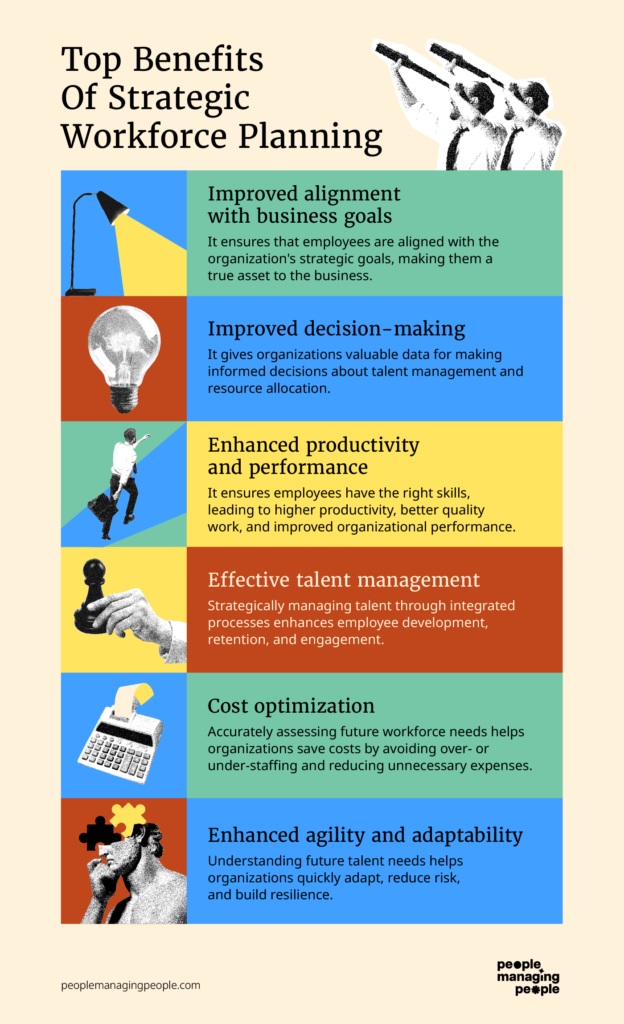
Costs & Pricing for Workforce Planning Software
When exploring workforce planning software, it's crucial to understand the variety of plan and pricing structures available. These tools are designed to support a range of organizational needs, from small businesses seeking basic functionality to large enterprises requiring comprehensive features and customization.
Pricing can vary widely based on the number of users, depth of features, and level of support provided. Most systems offer a monthly fee per user, though some do offer a flat monthly fee as well. Because of the sophisticated nature of these software systems, many vendors only providing pricing upon request.
Below, I've outlined the most common plan options, including a free tier for those just starting out or with minimal needs.
Plan Comparison Chart for Workforce Planning Software
| Plan Type | Average Price | Common Features |
|---|---|---|
| Free | $0 | Basic scheduling, limited reporting, and access for a small team |
| Basic | $2-8 per user/month | Enhanced scheduling, basic analytics, mobile access, and support for small to medium-sized teams |
| Professional | $10-30 per user/month | Advanced analytics, integration capabilities, customization options, and priority support |
| Enterprise | Custom Pricing | Comprehensive feature set, advanced customization, dedicated support, and scalability for large organizations |
When selecting a workforce planning software plan, consider both your current needs and future growth. I recommend starting with a plan that meets your immediate requirements while offering the flexibility to scale as your organization evolves.
Frequently Asked Questions about Workforce Planning Software
Still wondering about workforce planning software and how it’s different from workforce management? These answers to popular questions we’ve received on both types of software should help clear things up.
What is workforce planning?
Workforce planning is a strategic process that companies use to align their workers with their business goals and objectives. It involves a forward-thinking approach aimed at developing strategies to ensure you have the right people in the right roles at the right times. To do that, organizations must analyze and forecast their future workforce needs in terms of the quantity of employees and their specific skills and capabilities for key roles.
Why is workforce planning important?
Workforce planning is crucial to ensuring the longevity of your company. Just like, as an individual, it’s important to plan for your eventual retirement, as a company, it’s important to plan for your company’s evolution in leadership turnover too.
If you need more details to convince you, here are several key benefits of workforce planning:
- Improved alignment between your employees and your business goals
- Improved decision-making
- Enhanced productivity and performance
- More effective long-term talent management
- Cost optimization
- Enhanced agility and adaptability
What's the difference between workforce planning and workforce management?
Some like to use the terms “workforce planning” and “workforce management” interchangeably, but they refer to different things. Here’s a brief summary of the difference between these two popular terms:
Workforce management covers the following:
- Having the right people for the right roles.
- Aspects that fall under workforce management would be time tracking, employee scheduling, and payroll.
- The focus is on the current state of your workforce today.
Workplace planning, on the other hand, covers the following:
- Identifying the goals of the organization and aligning them with employees.
- Identifying the steps required to prepare for future staffing needs and strategic workforce planning.
- The focus is on the state of your workforce in the future.
Some systems may offer features that cover both workforce planning and management needs. If your needs align more with workforce management, take a look at my list of the best workforce management software instead.
What are the first steps in developing a workforce plan?
Kicking off a workforce plan can feel daunting, but when you have clear steps to follow, it makes it a bit more approachable. Here are some suggestions on where to start:
- Define Your Objectives: Nail down what you aim to achieve with your workforce plan. Is it growth, restructuring, or improving efficiency? Your goals should align with your company’s strategic direction.
- Analyze Your Current Workforce: Take stock of your current team. Assess skills, roles, and performance levels. It’s crucial to understand where you stand before planning where you’re heading.
- Identify Skill Gaps and Future Needs: Compare your current workforce capabilities with your future needs. This step is about spotting the gaps in skills or roles that could hinder reaching your objectives.
- Develop Strategies: Based on the gaps you’ve identified, strategize on recruitment, training, or restructuring. This could mean planning to hire new talent, upskill current employees, or even downsize.
- Implement the Plan: Put your strategies into action. This is where you recruit, train, or reorganize as planned.
- Monitor and Review: Keep a close eye on how well your plan is working. Use metrics to track progress and make adjustments as necessary.
Starting with a clear objective and thoroughly understanding your current workforce lays the groundwork. From there, identifying gaps, creating and implementing strategies, and continuous review ensures your workforce is always aligned with your business goals. It’s a dynamic process that keeps your organization agile and competitive.
How do external factors like economic trends affect workforce planning?
External factors like economic trends play a crucial role in workforce planning, especially in our current context, where we’re seeing swift and drastic shifts in key areas. For example:
- Rising inflation rates are affecting wage expectations and hiring budgets
- Technological advancements are pushing companies to either upskill current employees or scout for new talent
- Globalization is heightening the competition for talent worldwide
Adapting workforce strategies to meet these trends is key to maintaining a competitive edge. Keeping a pulse on these external factors ensures businesses can pivot quickly, managing risks and seizing opportunities as they arise.
Can workforce planning software help identify skill gaps within an organization?
Absolutely, many workforce planning software solutions have features that help analyze your current workforce’s skill sets, compare them against your company’s strategic goals, and highlight areas where your team might be lacking. Through detailed skills mapping and analytics, they can pinpoint exact skills or roles you need to fill to meet future demands.
Many platforms also offer insights into training or development opportunities to bridge these gaps, making it easier to plan for both short-term needs and long-term growth. These are really valuable functionalities that can help you see not just where you are, but where you need to go skill-wise.
What kind of software integrations are important for workforce planning software?
Software integrations are important because they will significantly reduce manual data entry and remove the likelihood of introducing human error. Since your employee data will be spread out across a number of sources, so you’ll want workforce planning software that can pull data from the following sources:
- Employee management systems (e.g., HRIS, HCM, HRMS)
- People analytics platforms
- Talent management systems
- Workforce management solutions, including scheduling tools
- Employee time and attendance tracking systems
- Payroll software
Other Resources to Optimize Your Strategic Planning
As you can see, workforce planning is heavily rooted in strategy. If you're looking for other types of software to assist with your strategic planning, these other lists are also worth a quick look:
Note that while there is some overlap between workforce planning and succession planning, they are not the same. Check out our article explaining what succession planning is for a more detailed breakdown.
What Do You Think About This List?
These are just a few of the many excellent workforce planning tools on the market. Whether you’re a small business, or a large enterprise, there are a number available at your fingertips to help you deal with the difficult task of workforce planning.
If you are looking for more insights into the topic of workforce planning, be sure to subscribe to our newsletter for more!





